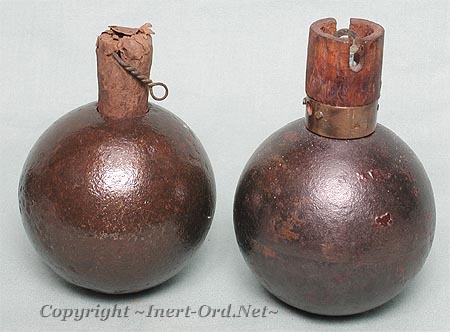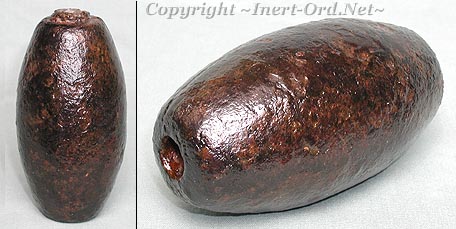 The Hand Grenade - A Short History
The Hand Grenade - A Short HistoryA small hand thrown bomb was among the first military applications of black powder explosive. The basic idea was straight forward enough... a container of powder with a time fuze providing enough delay for the user to seek cover before detonation.
First appearances of this new weapon were certainly startling. The loud explosion, with flame, smoke and flying debris was an effective tool for creating havoc and disorientation among advancing forces. While these effects were dramatic, efforts required to field this new contrivance were usually more that it was worth. Problems with fuze reliability, difficulties storing and transporting them and general ease of use issues, kept the hand grenade from being developing much beyond this rudimentary concept.
While grenades continued to be used by various military forces (especially in Europe) it never was more than a relatively obscure weapon. (Although "grenadiers" were often an elite service branch.)
Advancements in technology during the mid 1800's revived interest in the hand grenade as a tool of warfare, as it could be made more reliable and easier to use . But it wasn't until World War I that tactical advantages of using them made the hand grenade a fundamental infantry weapon.
A typical 18th or 19th century grenade was based on a hollow 6 lb cannon ball filled with black powder. A hole in the top held a simple fuze. It could be thrown about 30 yards but would scatter fragments over twice that distance. By definition this is a "defensive" grenade type; one needs to be in a protected position in order to use it safely.
A common method of throwing these grenades involved a short lanyard secured to the wrist of the throwing hand. A clip on the other end of the lanyard was attached to the grenade's pull ring just before throwing. This ensured the pin was pulled only after the grenade was on its way, a testament to the unreliable nature of fuze technology of the time.

